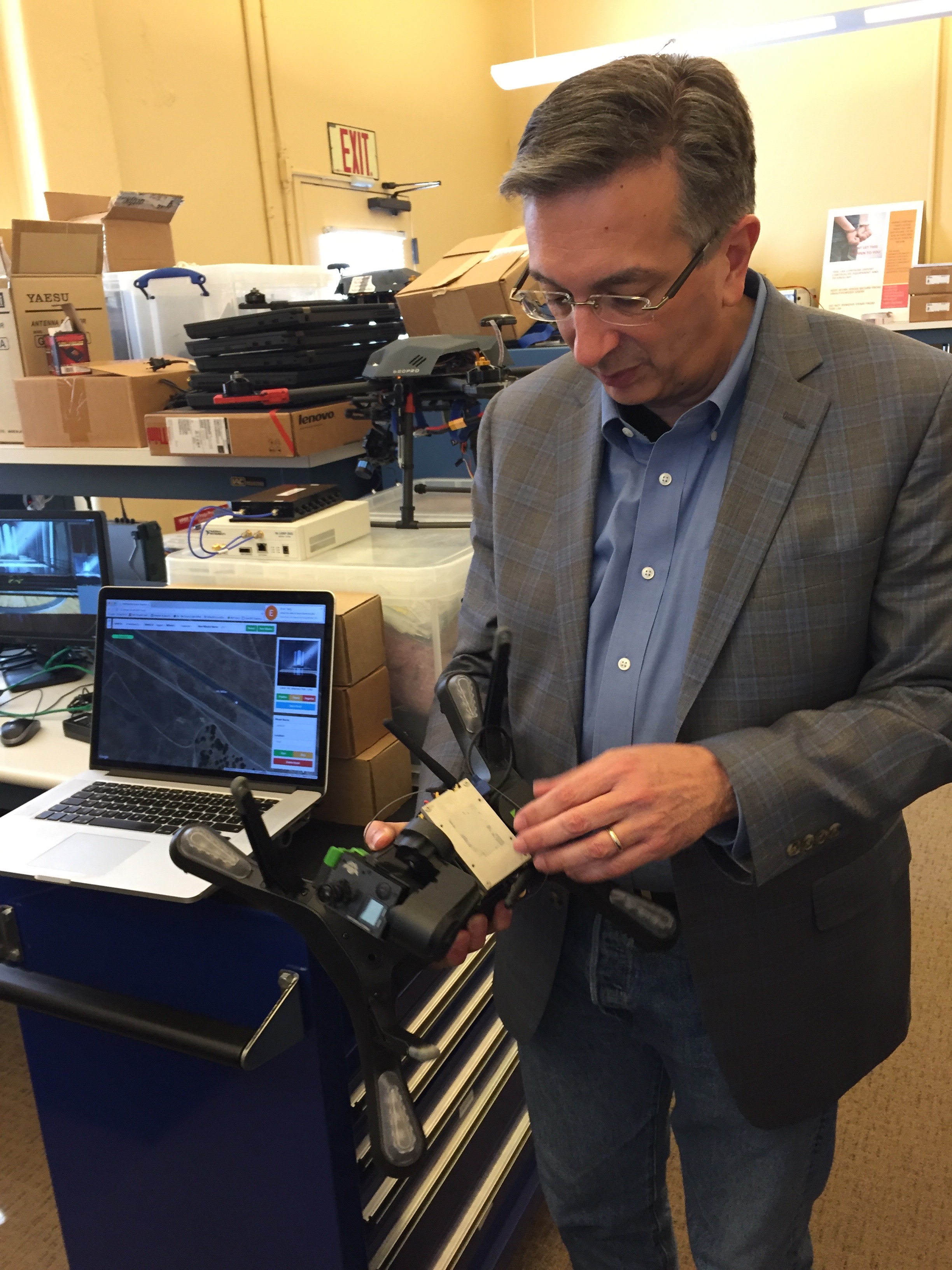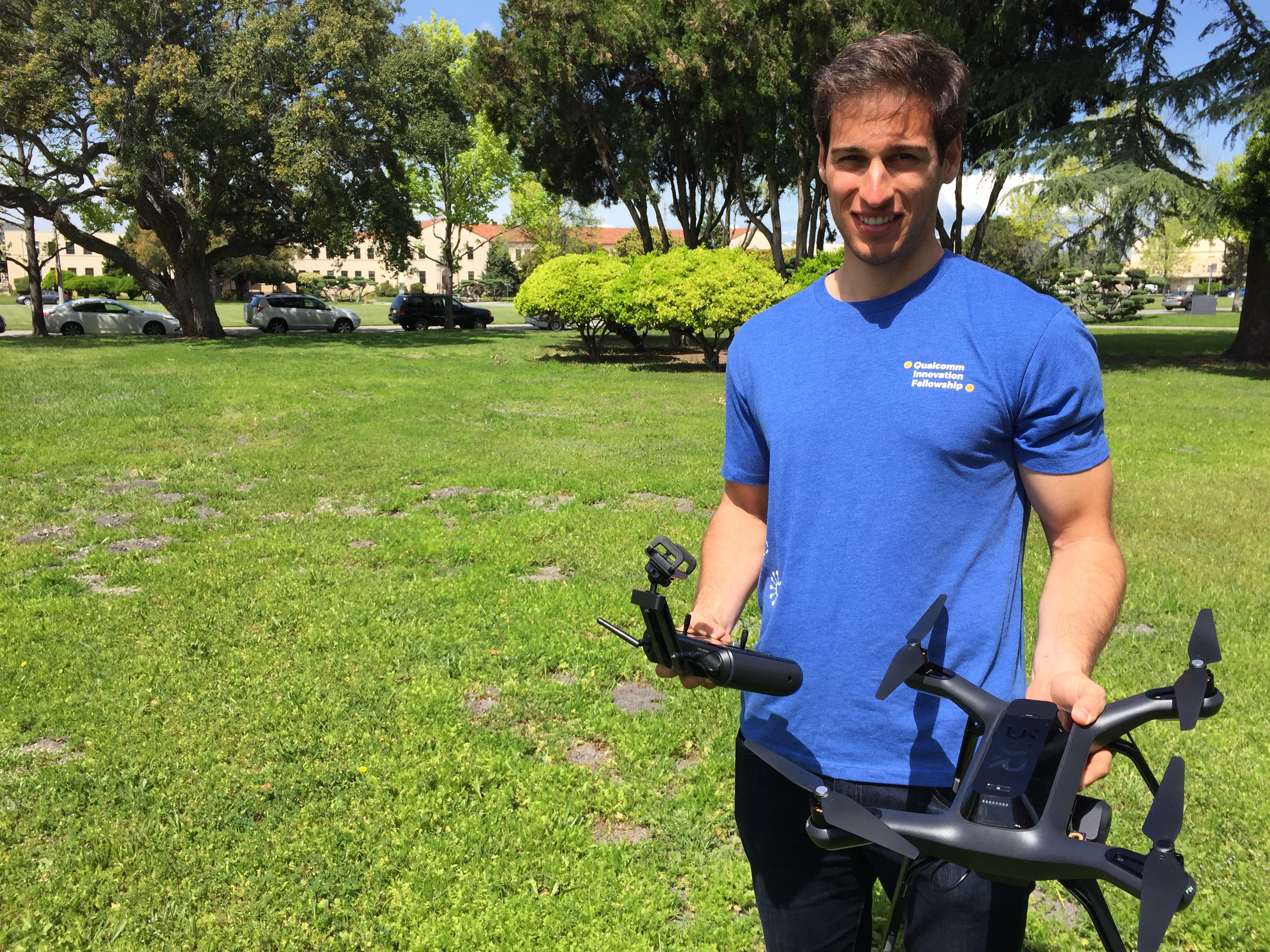Iannucci uses The Matrix to train drones in tracking objects
Adam Dove
May 12, 2017
In the 1999 film The Matrix, a young hacker named Neo learns that the world as he knows it is a virtual simulation—and with this realization comes the ability to use this virtual world to his advantage. In one scene, Neo, who has no combat training whatsoever, downloads an extensive knowledge of martial arts into his brain, making him a Kung Fu master in mere seconds.
What we’re doing is just like the Matrix.
Bob Iannucci, Distinguished Service Professor of Electrical and Computer Engineering , Carnegie Mellon University Silicon Valley

Source: John Baldridge
Prof. Iannucci holds a drone used in the VIPER project
“What we’re doing is just like the Matrix,” says Bob Iannucci, distinguished service professor of electrical and computer engineering at Carnegie Mellon University’s Silicon Valley campus (CMU-SV). “We’re hooking into the visual cortex and downloading information that would typically take much longer to learn in a very short amount of time. Only, we’re teaching drones.”
Imagine you want your drone to track a particular car. In order to teach the drone which car you want it to track, you can apply machine vision and deep learning techniques which work by aggregating large amounts of photo data to help the drone identify an object in a variety of situations. These algorithms take a significant wealth of data to train, however, and these substantial training sets are hard to obtain.
So what if you don’t have a lot of data, but you still need to tell the drone what it’s looking for, in real-time, using only the data it can collect from its surroundings?
Iannucci and his team, consisting of ECE researchers Ervin Teng, Joao Diogo de Menezes Falcao, and

Source: John Baldridge
Joao Diogo Falcao, Ph.D. Candidate, ECE, Carnegie Mellon University Silicon Valley holds a drone used in the VIPER project
Just like Neo, however, drone operators don’t always have the luxury of practicing in the real world. Due to lack of time or lack of available data, training a drone to identify an object in space or navigate an environment in the real world can be challenging. It’s this difficulty that led the team to develop the Virtual Image Processing Environment for
“Using a video game engine, we’re able to create a photorealistic, virtual training environment, identical to the real-world environment the drone will be encountering,” says Iannucci. “By training a virtual drone to identify the desired object in the virtual world, then uploading that data to the real drone in the real world, the real drone will ‘remember’ everything the virtual drone learned.”
Because the training simulations are done in the virtual world, operators can run them much faster than real-time. In the future, by networking multiple computers running multiple simulations together, the time reductions are potentially limitless. And now,
“This technology is broadly applicable,” Iannucci says. “Not only can it track individual cars or people, but it can be used for many other things, such as inspection of industrial sites or pipelines. It may not teach them Kung Fu, but the variety of tasks that VIPER has the potential to teach drones to perform is virtually limitless.”